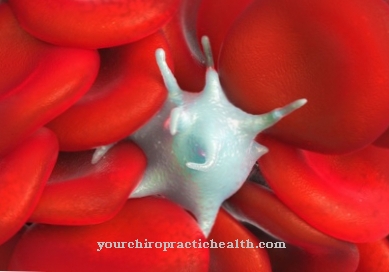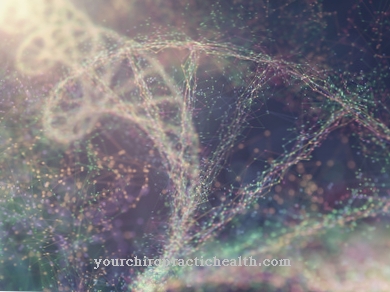The Absorption is the absorption of substances, as it takes place in the intestine, for example. Unlike in German, resorption in English means the re-absorption of substances that have actually been filtered out into the body. Absorption disorders occur, for example, in the context of food intolerance.
What is the absorption?

Resorption means the uptake of substances in biological systems.Resorption therefore plays a role primarily in the gastrointestinal tract, where it primarily takes place in the intestine. The epithelial cells in the wall of the human small intestine in particular absorb substances.
The term resorption is not defined in the same way in the German-speaking area as in the English-speaking area. In English, resorption does not mean the uptake of substances in biological systems, but the absorption of substances that have actually been filtered out, as occurs, for example, in the renal tubules. A distinction must be made between absorption as it takes place in the intestine or on the skin. This definition has not become established in the German-speaking area, although absorption has passed into German usage. The absorption of substances, as it takes place in the renal tubules, is not always referred to in German as resorption, but also as Reabsorption designated.
There are two types of absorption: passive and active substance absorption. Energy consumption is a major factor in active absorption, while the passive type takes place without additional energy expenditure.
Function & task
The two types of absorption differ fundamentally in their course. With passive absorption there is a gradient in substance concentrations. Osmosis, i.e. diffusion through a selectively permeable membrane, causes the particles to move in the direction of the lower concentration. Such a type of absorption occurs in the intestine. Here, low-molecular substances such as water migrate from the intestinal lumen into the intestinal mucosa and are absorbed by its cells. In the lumen there is a significantly higher concentration of nutrients compared to the mucous membrane.
A distinction must be made between this and the active form of resorption, which takes place against a concentration gradient. Active absorption is also used when there is no concentration gradient. In this active form, the substances are transported with the help of so-called carrier proteins. These proteins are transporter molecules which, by consuming the energy carrier ATP (adenosine triphosphate), absorb substances against the concentration gradient.
In the intestine, with the uptake of amino acids and grape sugar into the intestinal mucous membranes, passive resorption initially takes place. From the mucous membranes, amino acids and glucose are absorbed into the blood and transported to the liver. Unlike amino acids and glucose, fats are absorbed from the intestinal mucosa into the lymph. Active absorption also takes place in this area. Many food components are broken down enzymatically in the intestine and only then transported into the blood and lymph systems with the use of energy. Active resorption, or rather reabsorption, also takes place in the tubules of the kidneys.
Usable substances like glucose and water are absorbed back into the body's bloodstream after the kidney corpuscles filter it. This vital process turns the primary urine into secondary urine, which is actually passed on into the bladder and then excreted. Thanks to absorption or reabsorption, the concentration of minerals, vitamins, fats and water in the body remains at a healthy level.
Illnesses & ailments
The absorption can be disturbed by various diseases. As part of this, hypovitaminosis, for example, often occurs. This means that there is a lack of vital vitamins in the body. In the case of absorption disorders, the body can no longer absorb a certain substance or only absorb it to a small extent. This phenomenon can arise, for example, as a result of chronic intestinal inflammation, such as the inflammatory disease Crohn's disease can present. Congenital defects are also conceivable. Most often, however, hypovitaminosis due to impaired absorption is preceded by the use of antibiotics because this drug affects the intestinal flora. If the intake of antibiotics has been recognized as the cause of an absorption disorder, the impaired absorption capacity usually recedes after a long time.
Disturbed absorption can also be a symptom of genetic food intolerance and then requires a complete change in diet. In the case of genetic glucose and galactose absorption disorders, for example, there is an abnormality on chromosome 22. This chromosome codes for the sugar transport protein. As a result, the ability to absorb sugar through the intestinal wall is reduced. If you eat a sugary diet, you will experience severe diarrhea. This can lead to life-threatening dehydration.
A similar phenomenon occurs in celiac disease, also known as wheat intolerance. The term malabsorptive diarrhea was introduced to describe diarrhea as a symptom of insufficient absorption as it occurs as a symptom of many intolerances. Colon cancer can ultimately be accompanied by absorption disorders. Interventions on the intestine can also result in impaired absorption of the intestinal walls.
Absorption disorders develop gradually and manifest themselves in symptoms such as diarrhea. In the late stages of such diseases, loss of appetite often occurs. The additional symptoms that an absorption disorder causes depends heavily on the substances whose absorption is impaired. Fatigue and exhaustion are particularly common accompanying symptoms.
























.jpg)



